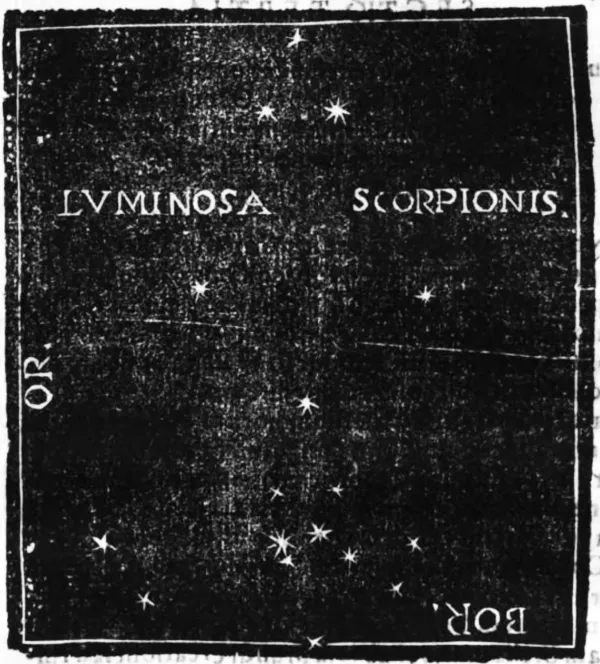Open Cluster NGC 6231

History
This open cluster was probably first observed by Italian astronomer Giovanni Batista Hodierna before 1654. He observed in Palermo, Sicily using a small galilean refractor with 20x magnification. On page 20 of his publication «DE ADMIRANDIS COELI CHARACTERIBUS» (On the Wondrous Characters of the Heavens) he wrote: «The seventh luminous constellation shines in the third region of the Scorpion, very remarkable due to the coordinated arrangement of 17 stars, namely, with a nebula attached to it, the pattern of which is shown in the accompanying diagram.» The drawing on the following page labeled with «LUMINOSA SCORPIONIS» which looks exactly like cluster NGC 6231 with the distinct almost equilateral triangle of stars ζ1 Sco, ζ2 Sco and HR 6266. Unfortunately his publication was little known outside Sicily. It had been rediscovered in the 1980s. [128]
Edmond Halley independently discovered the cluster in 1677 whle cataloging southern stars from the island of St. Helena. [364]
Nicholas-Louis de Lacaille (also: de la Caille) observed the cluster in 1751-1752 with a 1/2" telescope at 8x during his expedition to the Cape of Good Hope. He classified it as a nebulous cluster of stars and noted: «Cluster of seven or eight small, tightly packed stars.» [8]
Scottish astronomer James Dunlop made three observations in 1826 with his 9-inch speculum reflector at Parramatta, New South Wales in Australia. He listed the cluster as Δ 499 and noted: «A cluster of pretty bright stars of mixt small magnitudes, considerably congregated to the centre, about 10' diameter, with a large branch of very small stars extended on the north side; this is 150 Scorpii (Bode).» [50]
John Herschel listed the cluster as h 3652 and wrote: «A fine bright, large cluster; pretty rich; class VII; 10'; stars 10...13 mag. Place of a double star 5 m, the preceding but one of 7 bright stars in the middle.» [11]

Physical Properties
| Designation | NGC 6231 |
| Type | OCL (I3p) |
| Right Ascension (J2000.0) | 16h 54m 09.8s |
| Declination (J2000.0) | -41° 49' 30" |
| Diameter | 14 arcmin |
| Photographic (blue) magnitude | 2.8 mag |
| Visual magnitude | 2.6 mag |
| Metric Distance | 1.250 kpc |
| Dreyer Description | Cl, B, cL, pRi, st 10…13 |
| Identification, Remarks | h 3652; GC 4245; OCL 997; ESO 332-SC6 |
Finder Chart
The open cluster NGC 6231 is located in the constellation Scorpius, just half a degree above the two stars ζ1 and ζ2 Scorpii. On 6 June it in opposition with the Sun and is therefore highest in the sky at local midnight.
